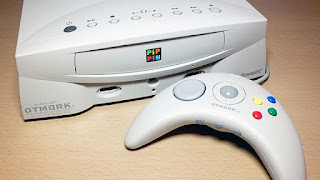The Rise and Fall of Apple's Pippin: A Short-Lived Experiment in Gaming and Entertainment
In 1996, Apple announced the launch of Pippin, a gaming console and entertainment system that was intended to compete with the likes of Sony's PlayStation and Sega's Saturn. Pippin was based on Macintosh technology and was designed to provide users with a wide range of gaming and entertainment options, including access to the internet, music, and video. However, despite its promise and potential, Pippin was a commercial failure and was discontinued less than a year after its launch. In this article, we'll take a closer look at the rise and fall of Apple's Pippin and explore the lessons that can be learned about experimentation and the gaming industry.
The Rise of Apple Pippin
At the time of its launch, Pippin was seen as a bold and experimental move by Apple to enter the gaming market. Pippin was based on Macintosh technology, and it was designed to provide users with a wide range of gaming and entertainment options, including access to the internet, music, and video. Additionally, Pippin's built-in modem made it possible for users to connect to the internet and access online content, which was a relatively new concept at the time.
Pippin was also designed to be highly customizable, with a wide range of software and games that could be added to the platform to enhance its functionality. This made it more flexible and adaptable to different use cases and workflows.
Additionally, Pippin's design and aesthetic was seen as sleek and modern, which helped it stand out from other gaming consoles in the market.
The Fall of Apple Pippin
Despite its innovative features and potential, Pippin struggled to gain traction in the market. One of the main reasons for this was its high price point. Pippin was priced at $599, which was significantly higher than other gaming consoles on the market such as the PlayStation and Saturn, which were priced at $299 and $399 respectively.
Additionally, Pippin's gaming library was limited and it failed to attract developers to create games for the console, which made it less appealing to consumers. Pippin's lack of support for current gaming standards such as 3D and CD-ROMs also limited its appeal to gamers and developers.
Furthermore, Pippin's user interface was seen as clunky and confusing, which made it harder for users to understand and navigate the platform. Additionally, Pippin's lack of integration with other Apple services and tools also limited its appeal.
Another issue was that Pippin's user adoption was low, despite the company's efforts to promote the platform and educate users about its features and capabilities. Pippin's lack of interest from the general public and lack of adoption, along with its high price point, resulted in poor sales, which led to its discontinuation.
The rise and fall of Apple's Pippin serves as a lesson in experimentation and the gaming industry. Despite its innovative features and potential, Pippin struggled to gain traction in the market due to its high price point, limited gaming library, lack of support for current gaming standards, and poor user adoption. Additionally, the lack of integration with other Apple services and tools also limited its appeal. Pippin serves as a reminder that experimentation alone is not enough to succeed in the market, and that companies must also consider factors such as price point, gaming library, support for current standards, and user adoption when entering a new market.

Comments
Post a Comment